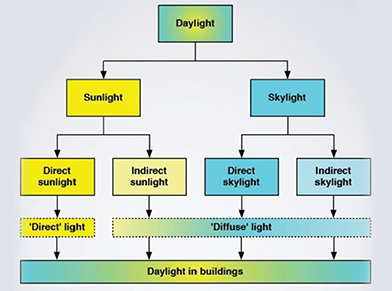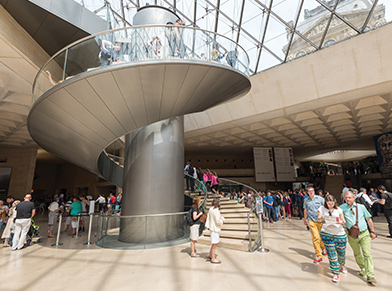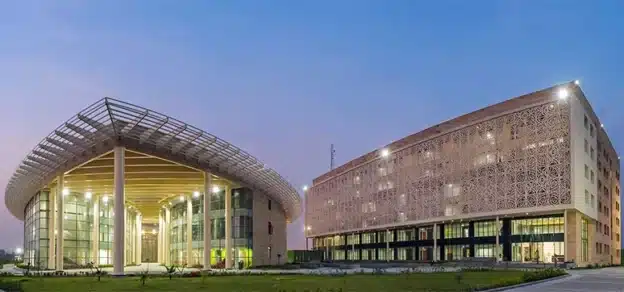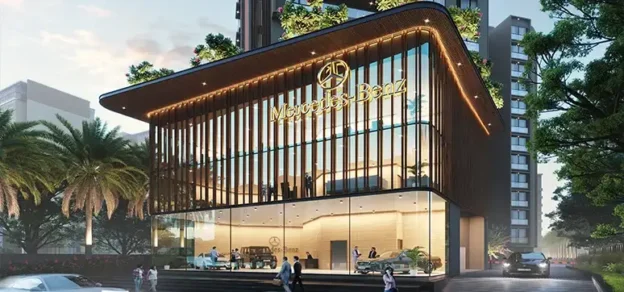Today, as we are progressively spending, close to 90 per cent of our time indoors – working or at leisure, the need to feel connected with the outdoors, and the natural world is also growing. A key factor catering to this need is exposure to daylight. It is more than just vitamin D, the pull of the natural view outside is built into our psyche; and this pull is addressed by the comfort that daylighting strategies in building designs, bring in.
So what is Daylighting? What is the source of Daylight? How does it affect us? And if it does affect us, what amount of daylight is good? How can access to Daylight, while staying indoors, be addressed? These are some questions that come to our mind, naturally.
What is Daylight?
It is a carbon-neutral renewable source of energy and can replace up to 80 per cent of lighting energy consumption during daytime hours, while also improving the health, well-being and attentiveness of the building occupants.
From sunlight flooding in through a window, to flickering candlelight over a romantic dinner, or dazzling neon lights in a discotheque, light has a profound effect on the way we feel and experience time and space, both consciously and unconsciously. So it becomes important for Daylight design to be combined with intelligent ambient lighting control.
What are the Specificities of Natural Daylight?
It is composed of direct sunlight and atmospheric light (sun radiation dispersed by water and dust). It is the reference illumination source to which our eyes are naturally adapted so that we nearly always find it more comfortable and attractive than artificial light.
How Does Daylight Affect Us?
There is clear scientific evidence demonstrating the benefits of daylight and associated external views in most buildings – benefits related to health, visual comfort, aesthetics and even energy savings!
For instance, in hospitals, it has been observed that patients in rooms that are well-daylit need up to 30 per cent less pain-relief medication than others they recover faster and return home with a happier state of mind; have quicker post-operative recovery, the shorter average length of hospitalization.
An extensive study in schools showed that comfortably-day-lit classrooms helped improve alertness and concentration levels in children, thus enhancing better learning.
In office environments, studies have indicated that employee job satisfaction levels and well-being and directly related to employee preference and access to Daylight. Evidence shows higher productivity rates and lower absenteeism rates in well-daylit office spaces
A recent study by neuroscientists suggested that office workers with windows received 173 per cent more white light exposure during work hours, and slept an average of 46 minutes more per night.
 The office layouts which maximize the use of natural light foster better communication and collaboration. When choosing a home, good natural daylight is often the second most important factor, after location. According to the International Energy Agency, good use of daylight could represent approximately 50 per cent of the possible savings in electrical energy consumption. Daylight, by its variations in intensity and tint over time, also provides information about the hour of the day, the seasons, and the weather, helping to maintain our psychological and social equilibrium. Spaces lit with daylight appear naturally beautiful and spacious, as daylight is composed of a broad electromagnetic spectrum with excellent colour rendering quality. It plays a major role in defining the aesthetic quality of a space. Sunlight also encapsulates a clean energy offering, which can both be transformed into electricity via photovoltaic cells and warm a building by providing passive heat gain.
The office layouts which maximize the use of natural light foster better communication and collaboration. When choosing a home, good natural daylight is often the second most important factor, after location. According to the International Energy Agency, good use of daylight could represent approximately 50 per cent of the possible savings in electrical energy consumption. Daylight, by its variations in intensity and tint over time, also provides information about the hour of the day, the seasons, and the weather, helping to maintain our psychological and social equilibrium. Spaces lit with daylight appear naturally beautiful and spacious, as daylight is composed of a broad electromagnetic spectrum with excellent colour rendering quality. It plays a major role in defining the aesthetic quality of a space. Sunlight also encapsulates a clean energy offering, which can both be transformed into electricity via photovoltaic cells and warm a building by providing passive heat gain.
Excess of anything is bad, hence there is a need to control the daylight to avoid thermal and energy issues, and discomfort due to glare (Daylight >2000LUX; An extremely bright object against a dark background causes discomfort and can interfere with our visual perception. This is generically termed glare) and high contrasts.
Daylight needs to be designed in conjunction with the HVAC electrical and Architectural design. The correct artificial lighting design needs to be considered in conjunction with the daylight design. Intelligent lighting controls are an essential component of daylight design.
It can be safely concluded that the key to visual comfort in buildings is based on:
– Access to views/ the outdoors
– Daylight provision
• In sufficient quantity
• Distributed homogeneously throughout the space ( no dark areas, or flickering)
• In good combination with artificial light, adapted to the visual task and allows a good colour rendering
• Controlled to ensure the absence of glare and high contrasts
– In an aesthetically pleasing space
What Amount of Daylight is Good?

Metrics: Dynamic (climate and location-based) and Static (independent of climate and location),
Optimum illuminance levels – Lux, Daylight factor, Glass and Daylight
Daylight is an extremely dynamic resource in terms of Magnitude, Directionality, Spectrum/Colour and dependency on factors like climate, interior layout, occupant’s behaviour etc.
A comprehensive way to assess Daylight would be through:
1. Daylight Quantity: measured in illuminance or Lux (the quantity of light coming from all directions and reaching a given point.) This quantity allows mapping light distribution in a room independently from the observer.
Some standard recommended illuminance values are:
For commercial buildings: 500 lux
For residential buildings: 300 lux
2. Daylight Quality: Depends upon uniform distribution of Daylight, Glare, view etc.
The daylight level in the building is characterized by Daylight Autonomy calculated for the given climate:
– Between 8 AM and 6 PM
– For an illuminance level of 300 lux
– In the main rooms of the building: kitchen, living room, children’s bedrooms
– All the calculated daylight autonomy should be above 60 per cent
How to Enhance the Daylight Design of a Building?
Daylight designing strategies
depend on the building following characters:
• Orientation: Building orientation can determine the availability of daylight inside the building
• Form: Depending on the function and location of the building, the form can be useful in providing self-shading or complete solar access
• Interior Layout: Interior design
• Fenestrations: Fenestrations bring daylight inside the building. The shape, size, orientation and material property affect the daylight quantity and quality
– Side Lighting: Windows
– Top Lighting: Skylights
Windows are designed for one or many functions such as view, daylight, ventilation, and heat gain/loss.

Window-wall ratio (WWR) and Skylight Roof Ratio (SRR) address the quantity and distribution of daylight in a space. Glass is an essential component of windows that affects the quantity and quality of daylight. Glass by nature is an excellent material that enhances Daylight design strategies in building architecture. With its optical features that allow the blending of the interior with the exteriors, Glass is the perfect material to play with light and space. Transparent, translucent, mirrored and lacquered glass provides a unique source of contrast and sophistication to your spaces. High-performance glass (Solar Control, Thermal Insulation, and acoustic comfort) brings about solar and thermal insulation properties to a building, and helps in energy savings too, when used in facades and fenestration, as Glazing units.
Glazing Units
The dual and triple-glazed units have superior insulation properties reducing solar heat gain. The cavity between the glass panes is very important for the insulating effect. It is usually vacuum or air and can also be inert gases such as argon, krypton or a transparent gel medium. These glazing units are hermetically sealed during fabrication in the factory.
Below are the properties of glass which are helpful:
• U-factor: Reduces heat gain by conduction. It is the rate of heat loss or gain due to temperature differences across surfaces of glass. A lower U-factor is better.
• Solar Heat Gain Coefficient (SHGC): Reduces heat gain by radiation. It is the fraction of solar radiation that is transmitted and absorbed by the glass which ends up inside the building as heat. It indicates the window’s ability to block heat gain from solar radiation. SHGC also indicates the window’s shading capability – A very important glass property, especially in hotter climates. Lowering the SHGC is better. SHGC of 0.75 means, 75 per cent of the total radiation is absorbed by the glass.
• Visual Light Transmittance (VLT): Allows the visible light of the solar radiation spectrum; Fraction of visible light transmitted through the glazing; affects daylight and visibility: Higher VLT is better for good daylight
Balance is needed between daylight requirements and heat gain through windows.
LSG – Light to solar heat gain ratio is: LSG =
VLT/ SHGC. LSG of 1.5 or more is good for warm climates.
Daylight Factor
Daylight factor (DF) is defined as the ratio of interior illuminance (Ei) to available outdoor illuminance (Eo).
DF = (Interior Lux/ Exterior Lux)*100

This concept was developed for overcast skies. DF can be calculated if the sky luminance distribution is known or can be reasonably estimated.
Factors Affecting Daylight Factor in a Space
• Size of daylight apertures (windows, skylights, etc.);
• Location of daylight apertures (side lighting, top lighting, etc.);
• Access to daylight (considering the site, building, and room
• contexts);
• Room geometry (height, width, and depth);
• Location of the point of interest relative to apertures;
• Visible transmittance (VT) of glazing;
• Reflectances of room surfaces and contents;
• Reflectances of exterior surfaces affecting daylight entering the aperture;
• The effects of daylighting enhancements (such as light shelves).
Furthering the initiative of educating about the significance of Daylight in building design is Glass Academy India – a non-profit organization,
constituted and functioning with an objective to be an industry-professional-academia-interface to impart knowledge and skills amongst the various stakeholders. Glass Academy is steered by an Advisory Board consisting of a distinguished panel of experts from academia and industry who have made significant contributions to the development of Indian glass fraternity.
Glass Academy is hosting a webinar series called Enlightened Spaces from July 2015 to December 2015, which will see industry expert share their views and experiences on Daylighting concepts and their effects on human health and well-being, work productivity, thermal comfort and improvement in overall building performance along with techniques and strategies to be followed to harness maximum daylighting in buildings in the appropriate manner.
Registrations are in full swing at www.glassacademy. com/webinars. The attendees also await certification from Glass Academy, endorsed by the Chairman- Glass Academy Advisory Board after the webinar series with an assessment at the end of it.














